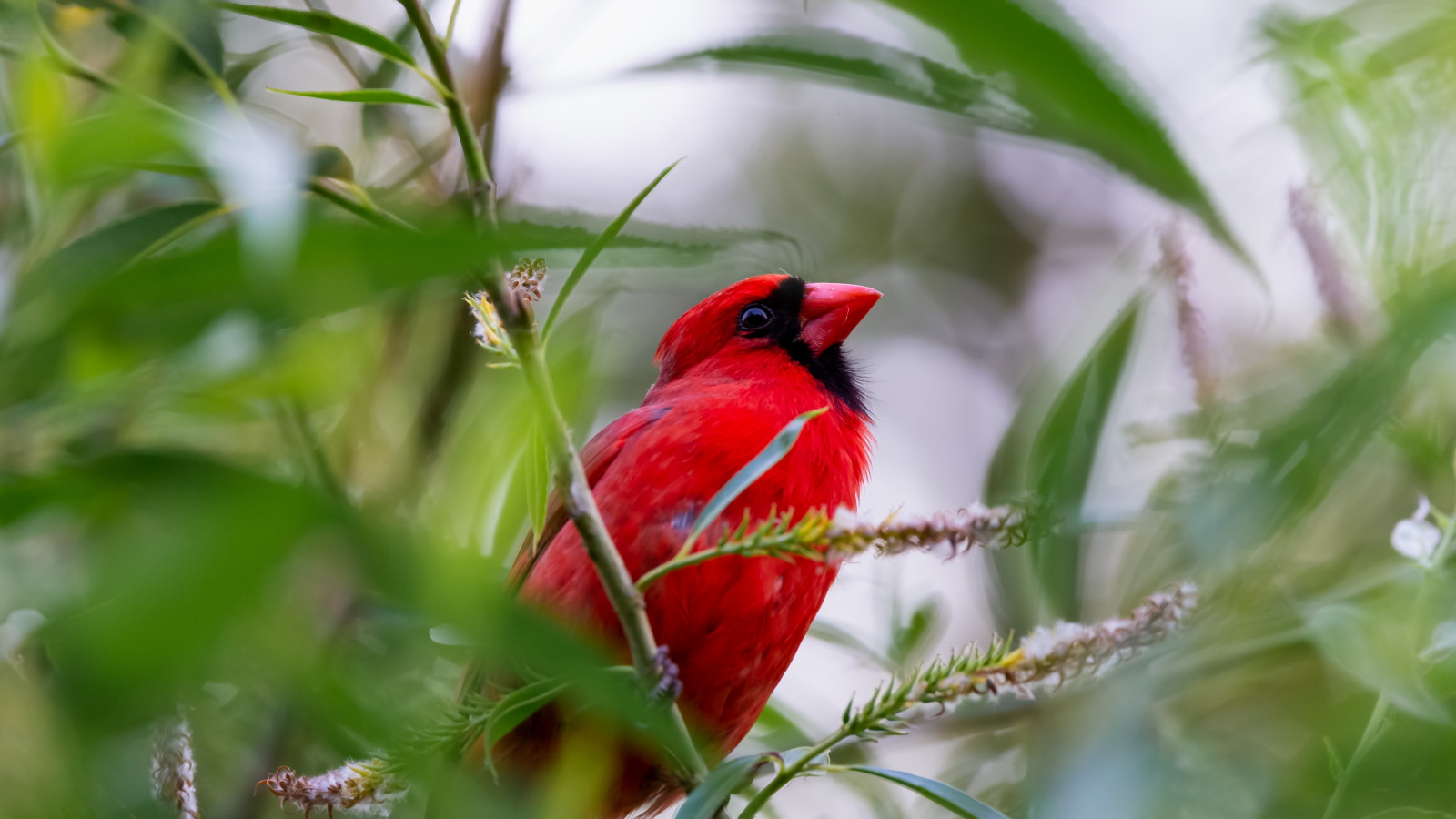
The iconic crimson songbird, Cardinalis cardinalis, commonly known as the red cardinal, is a popular species found throughout much of the eastern half of the United States. It is so well-known and well-loved, that it is the state bird for seven US states: Illinois, Indiana, Kentucky, North Carolina, Ohio, Virginia, and West Virginia.
Red cardinals are medium-sized songbirds, typically measuring around 9 inches from beak to tail. The famed plumage color of the male red cardinal is bright, glowing red, with a black bandit-like mask around its beak. The female cardinal is similar in shape and size, but her feathers are typically brown with red hues displayed in the wings, tail, and crest.
These songbirds are often found - or heard - in woodlands, gardens and parks with dense vegetation. For those seeking wildlife garden ideas, note that cardinals are typically drawn to woodland areas with thick shrubbery, which provides both food and protection. Here, we share advice from experts on trees, shrubs and flower bed ideas that cardinals are attracted to, and also provide some additional actions you can take to watch these songbirds flourish in your yard.
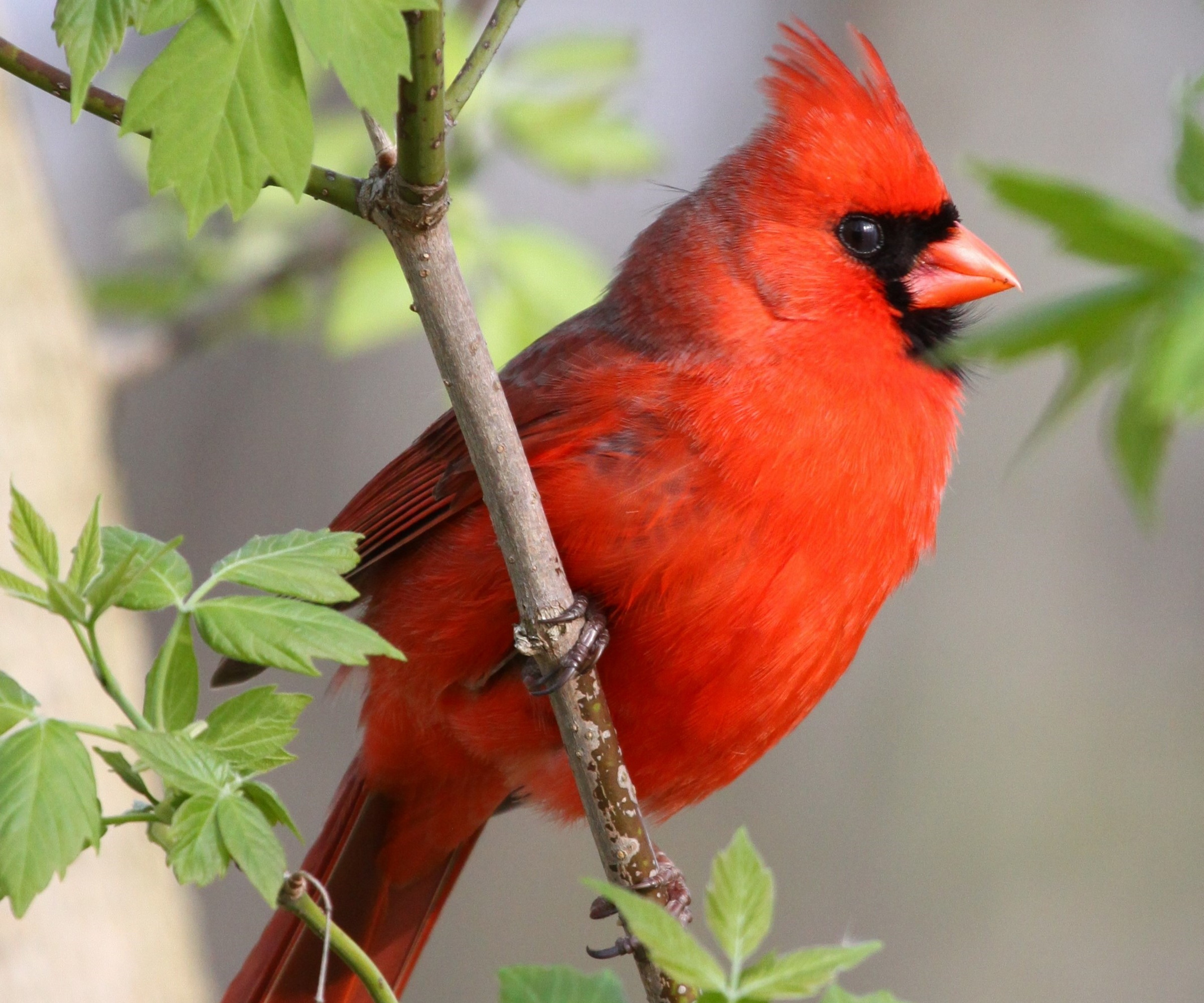
How to attract red cardinals to your yard
Red cardinals are popular songbirds found throughout much of the eastern half of the United States. They are drawn to certain trees, shrubs and flowers as they seek both food and protection.
By considering cardinals when making planting choices, and by taking wildlife-conscious actions in your borders, gardeners can help not only attract songbirds to the backyard and watch them thrive.
Native trees and shrubs for cardinals
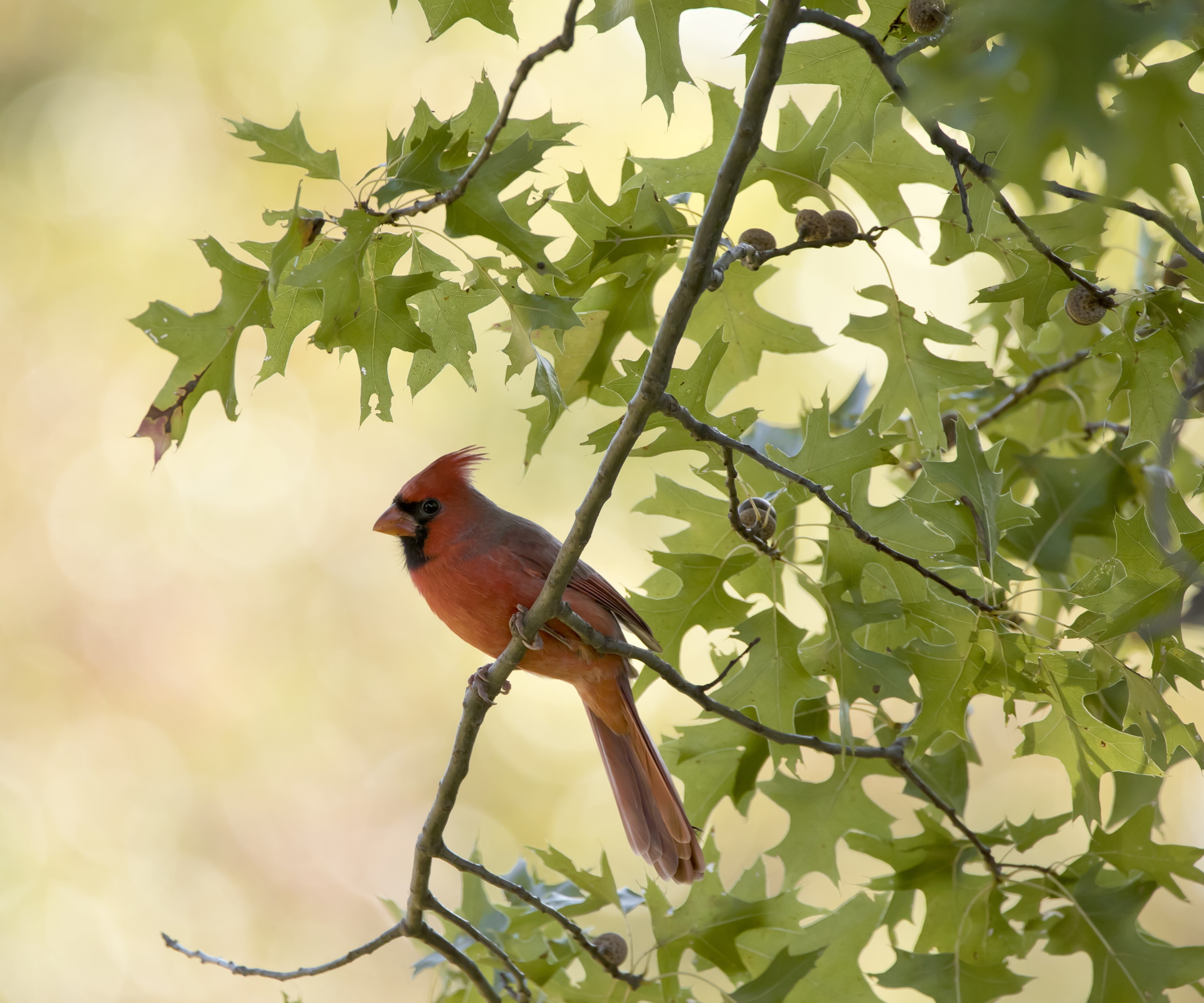
'Trees and shrubs are the cardinal’s best friend,' says Tammy Poppie, a bird-watching expert from OnTheFeeder.com. 'Not only do trees and shrubs offer shelter and protection, but they also provide a variety of food sources such as berries, nuts and seeds.'
They are particularly attracted to areas with hedging or dense shrubbery that provide both cover and protection. 'Branches also make the perfect perching spot for cardinals to survey their surroundings,' says Tammy, which is important for wary and territorial songbirds.
As seen in the image above, 'the mighty oak tree is a favorite of cardinals and many other wild birds,' Tammy reveals. Indeed, the oak tree 'provides a variety of food sources such as nuts, acorns, and insects, but its dense foliage also provides refuge from the elements.'
'Growing native shrubs and trees,' such as some of the best native dogwood trees, serviceberry trees and hackberry trees, 'is one way to attract cardinals,' says Tammy. Indeed, there is evidence to support this theory, with the National Wildlife Federation highlighting a study from 2015 that monitored how the Californian chickadee flew past non-native tree species to feed instead at a native willow oak tree. 'While this study focused on one breed of bird, the lessons learned can be applied to birds everywhere,' says Tammy.
Native woodland plants, therefore, are considered to be popular with cardinals. Cornus nuttallii, or the Pacific dogwood, for example, is one planting option. It will grow well in US hardiness zones 7 to 9, 'tolerating some shade,' says Dr Ross Bayton, Director at Heronswood Gardens in Washington.
This native dogwood 'produces white flower clusters in spring,' Ross continues, before going on to produce 'red berries in fall.' The wildlife value of native dogwoods is undeniably significant, renowned as some of the best plants for pollinators throughout the seasons. In the springtime, for example, they produce masses of blooms, and come fall, many birds feed on the berries as they stock up for the winter months.
Flowers that attract cardinals
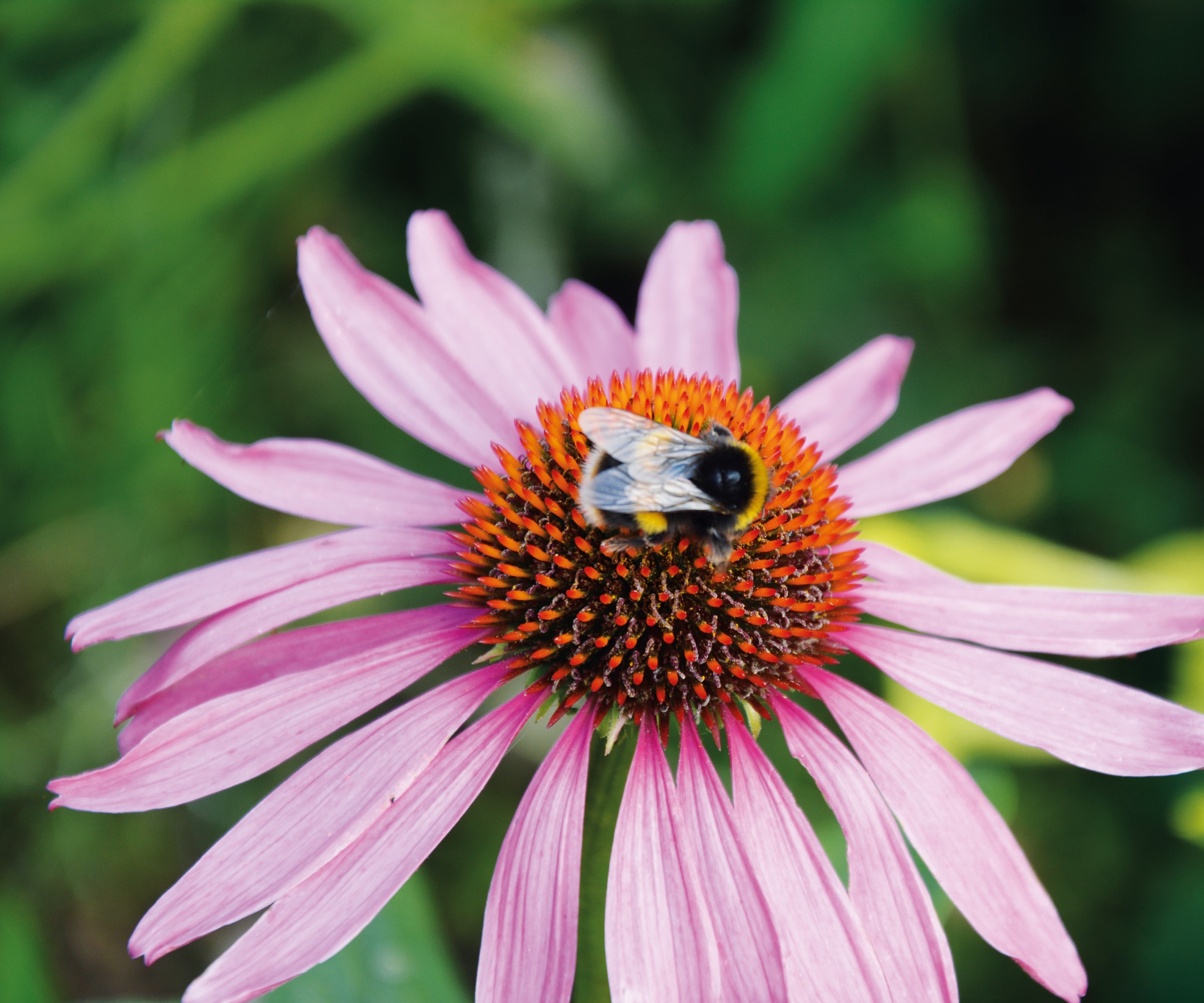
While many trees and shrubs produce blooms that are appealing to cardinals, the flowers produced by several different perennials and annuals are also considered very popular with songbirds. Fortunately for gardeners, some of the best plants for birds are also some of the traditional garden favorites.
Flower preferences tend to differ between avian species. For example, flowers enjoyed by cardinals tend to differ from those flowers that attract hummingbirds. Cardinals are known to be attracted to sunflowers, verbena varieties and coneflowers, some of the easiest flowers to grow from seed.
'Sunflower blooms are guaranteed to lure in cardinals with their abundance of striped seeds,' says Tammy. 'The cardinal’s beak is perfectly suited for the larger seeds that sunflowers produce.'
The native Verbena hastata, commonly known as blue vervain, is also a popular flowering plant for attracting cardinals. 'The foliage is coarse, but the tall spikes of purple-blue flowers are graceful and are adored by pollinators and birds,' says Ali McEnhill, plant expert and owner of the Old Dairy Nursery in the Hudson Valley. What's more, 'this tough, native perennial is extremely cold hardy, growing well in cooler zones.' Verbena plants are readily available from garden stores, such as this blue vervain from Nature Hills.
Cardinals typically begin breeding in early spring, usually around March to June. During this time, male red cardinals will often be seen and heard tweeting as they seek to establish territories and attract a fellow cardinal to mate with. It can be a good idea to install a bird feeder, which can support red cardinals during the winter and early springtime as they prepare to breed. Keep feeders stocked with sunflower seeds, fat balls and suet, such as these suet treats for birds from Walmart.
Provide water for cardinals
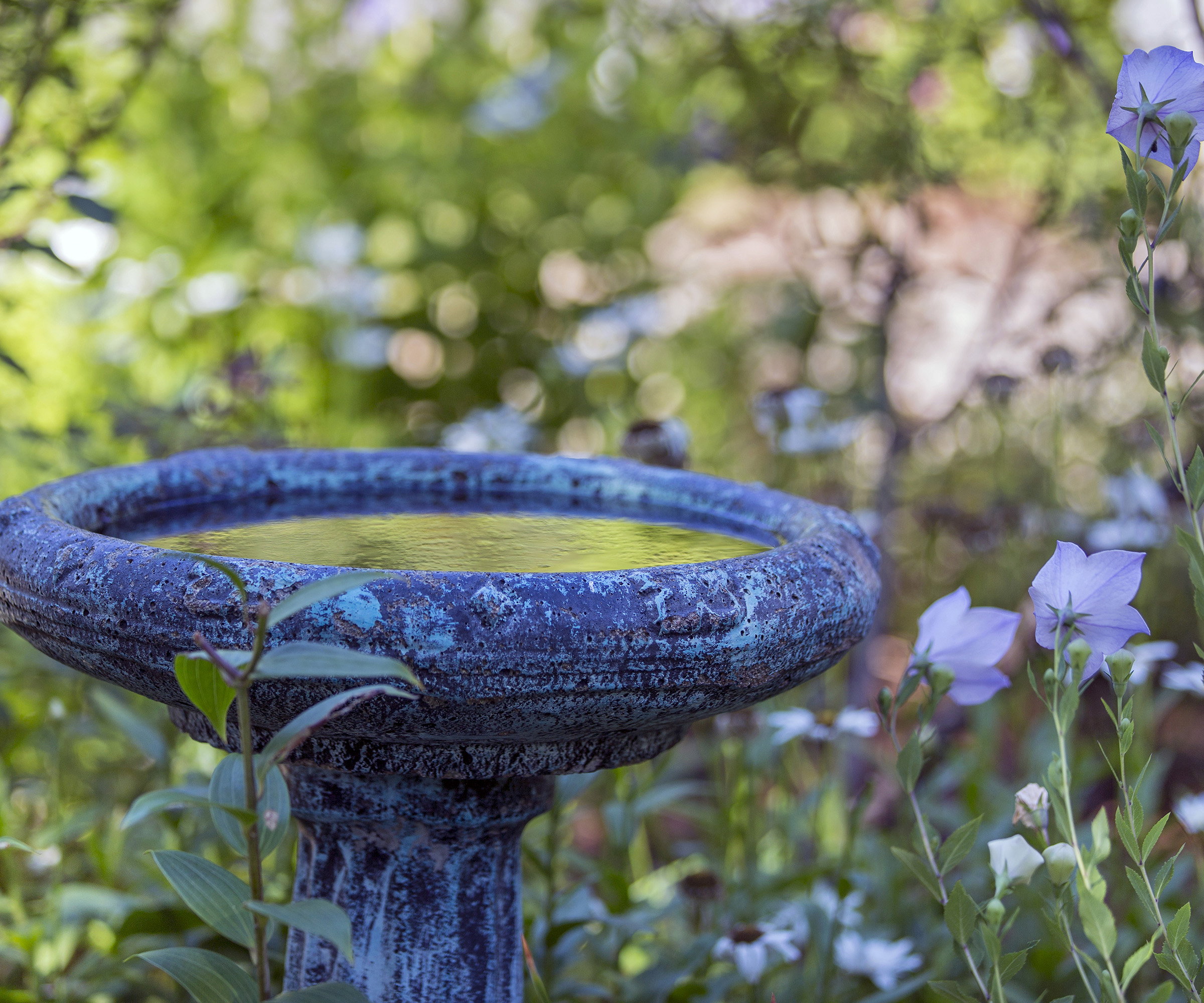
'All wild birds need water to drink and bathe in and northern cardinals are no different,' says Tammy. 'One way to ensure that water is available in your yard is by installing a birdbath.'
For those considering how to make a bird bath, there are many simple and easy DIY bird bath ideas to choose from. For example, using a plant pot saucer and refilling it with fresh water every few days is both quick and cost-effective.
It is important to remember to position bird baths somewhere that gives songbirds a 360-degree view. When drinking and bathing, they are vulnerable to attack from predators, so it is best to place any bird bath somewhere raised and in an open position. In addition, for smaller songbirds, it is best to add layers of rocks to the bird bath to offer alternate depths of water and areas for birds to perch.
Grow organically for cardinals
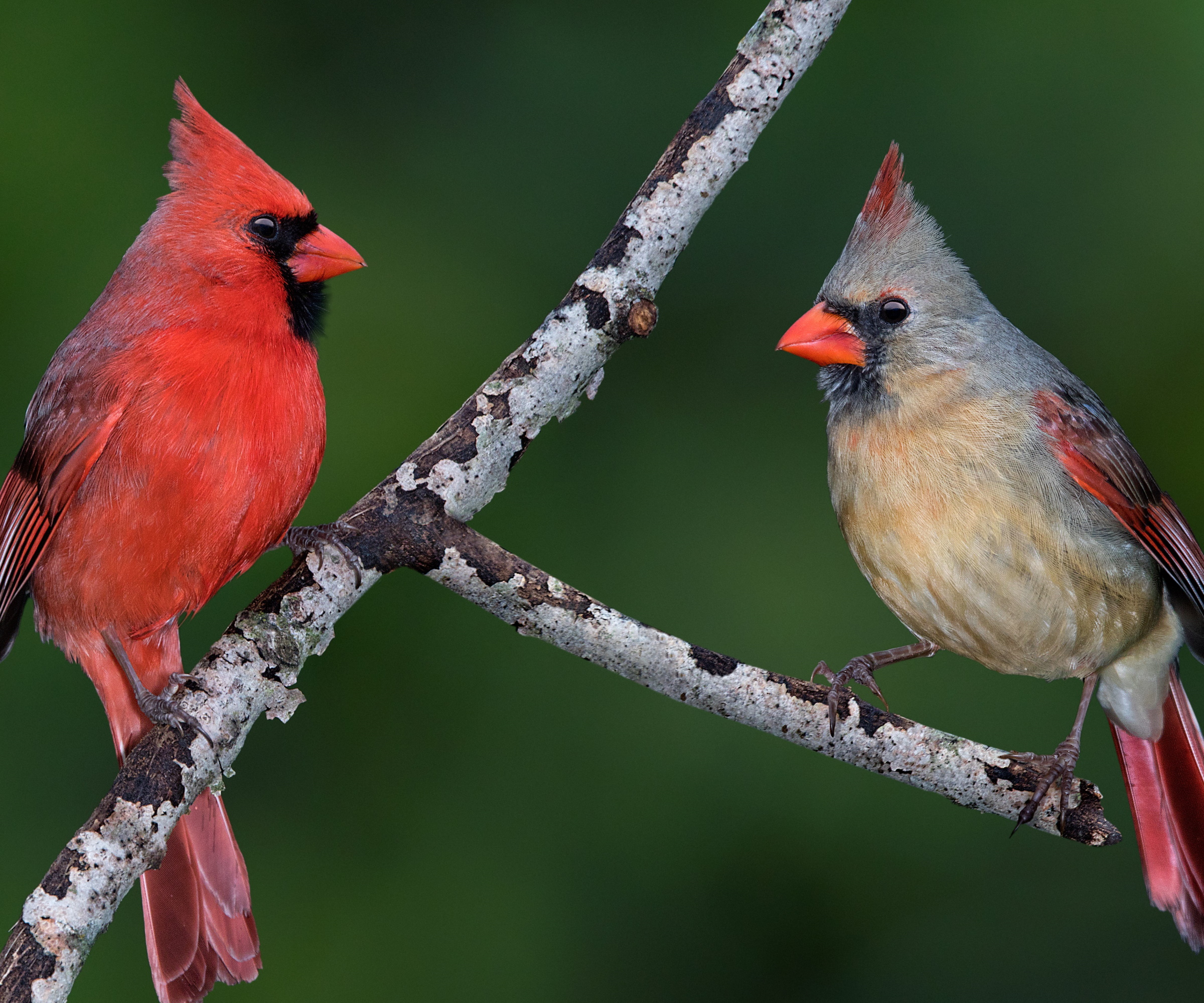
'While cardinals are primarily seed-eaters, in spring they switch to snacking on insects,' says Tammy. 'Adult cardinals eat insects during this time, and insects are exclusively what they feed their young during the breeding season.'
For this reason, it is recommended to put the pesticides and herbicides away and consider permaculture gardening and organic approaches in the backyard.
If you are keen to increase the number of birds in your outside space, why not plant a butterfly border? By incorporating plants that are known to attract butterflies, red cardinals will naturally be drawn to your borders as they seek to feed on caterpillars.
The monarch butterfly, for example, uses milkweed as a host plant, laying its larvae on milkweed stems and leaves. Growing this low-maintenance plant is thus a good idea for those seeking to increase biodiversity in the backyard and in doing so provide additional food for red cardinals.
Shop bird-feeding ideas
This Phancir bird feeder is an attractive model for wild birds in the yard. The latest new design comes with a latch feature, which is safe and reliable. The lid can be opened and closed for refilling. The hanging bird feeder has some drain holes in the tray to keep the food dry.
This Cartman's birdhouse will be a draw to songbirds! Made of premium natural materials, this bird box will add fun and cheer to any garden decor. This is an excellent gift for birds and/or nature lovers. An internal mesh floor ensures that the nest is elevated from the base to prevent moisture and dampness.
This 5 lb pack of top-tier, dry wild bird food is designed to attract a vibrant array of songbirds like chickadees, nuthatches, cardinals, finches, jays, titmice, and grosbeaks. This blend is uniquely appealing due to its inclusion of real cherries and raisins, a favorite among the most colorful songbirds.
FAQs
Do cardinals migrate in the winter months?
Red cardinals do not tend to migrate in the winter months, although they may travel far and wide if food becomes scarce. In the dark of winter, the glowing red plumage of the red cardinal is a spectacle to behold. To help songbirds in your yard during the winter, it is recommended that you provide adequate shelter, water and food.
Encouraging red cardinals in your backyard is a fulfilling and rewarding endeavor. By incorporating native trees, shrubs and flowers, and by providing shelter and water, you can support songbird populations in your local area.
If you are looking for more wildlife garden ideas, why not also consider installing one or two bat houses in your backyard? Bats are important pollinators for many plants and can help to keep mosquito levels down during the summer months.







